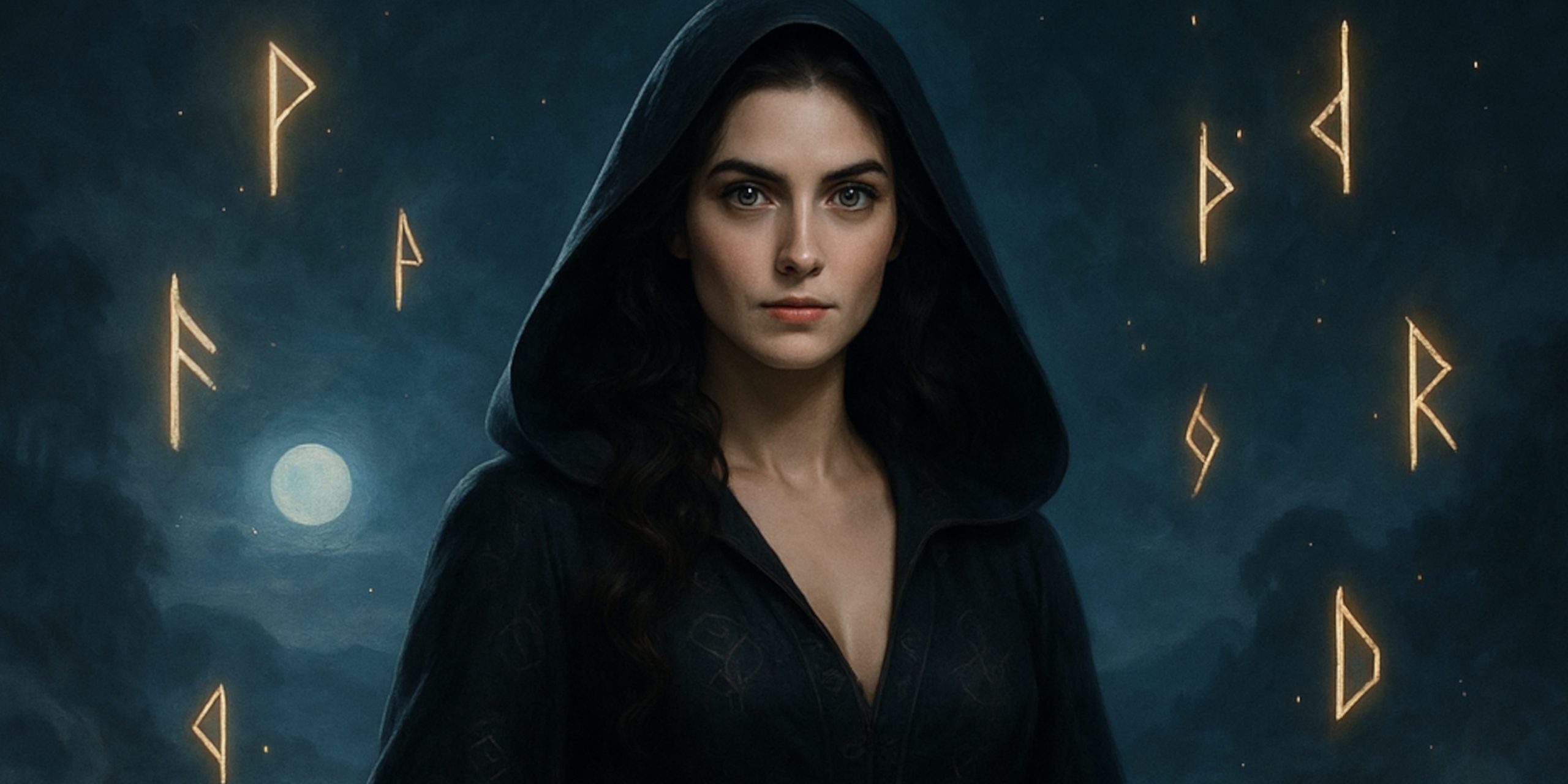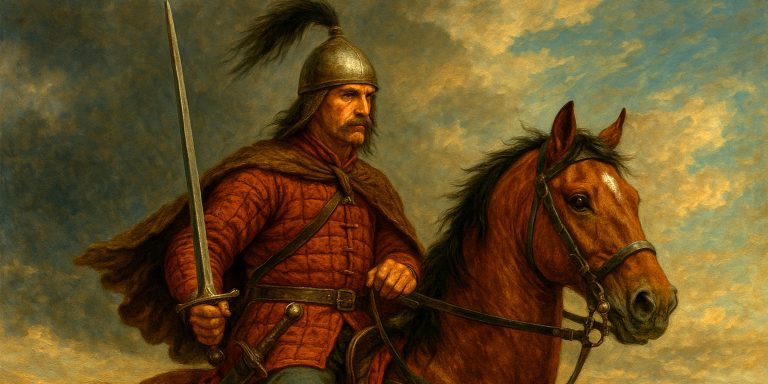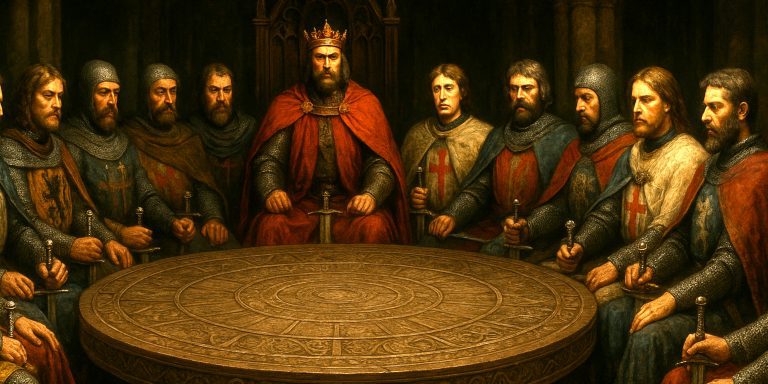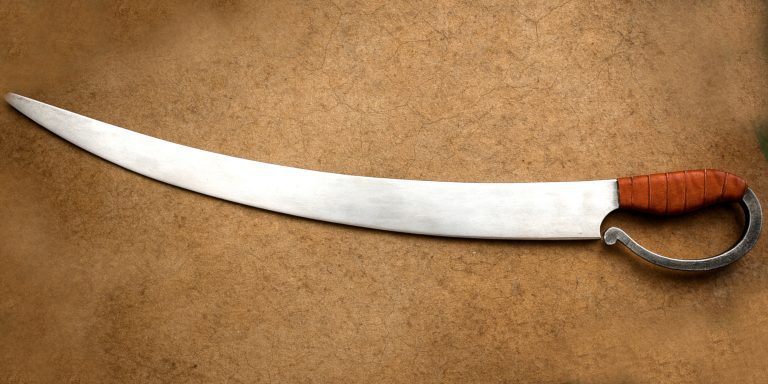
Few figures in medieval legend are as beguiling, contradictory, and persistently misunderstood as Morgan le Fay. Somewhere between saint and sorceress, she occupies that fascinating middle ground where myth bleeds into morality tale. To some, she was Arthur’s half-sister and healer; to others, a vengeful witch devoted to bringing down Camelot. She is, in many ways, the mirror image of Merlin, except that she seems to have understood the cost of power far better than he did.
Origins and Early Depictions
Morgan’s earliest appearances stem from early Celtic traditions, later formalised in Geoffrey of Monmouth’s Vita Merlini (c. 1150), where she is described not as a villain but as a benevolent ruler of Avalon. Her name itself derives from the Old Welsh Morgen or Morrígan, meaning “sea-born” or “phantom queen,” hinting at her connection to otherworldly waters and deathly transformation.
By the time of Chrétien de Troyes and Thomas Malory, however, she had evolved, or been rewritten, into something far more dangerous. The courtly romances of the 12th to 15th centuries recast her as a scheming enchantress, dabbling in necromancy, potions, and seduction. One might say medieval authors, anxious about powerful women, found a convenient scapegoat in Morgan.
The Sorceress of Avalon
Morgan le Fay’s home, the Isle of Avalon, was a liminal place: half paradise, half purgatory. As the high priestess of this mystical realm, she was said to heal Arthur’s mortal wounds after the Battle of Camlann. Whether she did so out of mercy or triumph is open to interpretation.
In Malory’s Le Morte d’Arthur, she oscillates between healer and tormentor. She steals Excalibur’s scabbard, plots against Arthur, and entangles knights in enchantments, yet she also tends the dying king at the end. Her powers, while framed as dangerous, are always tied to wisdom, knowledge, and a certain moral autonomy, qualities medieval writers found suspicious in women.
Symbolism and Meaning
Morgan represents the peril of unrestrained knowledge, but also the tragedy of female agency in a patriarchal age. She embodies the scholar, the healer, and the heretic rolled into one. To the Church, her mastery of herbs and divination was witchcraft; to modern eyes, it looks suspiciously like medicine and intellect.
Where Arthur is the embodiment of order and knighthood, Morgan is the embodiment of nature and chaos, two sides of the same coin. The myths need her, if only to prove that Camelot’s ideals were fragile in the face of human complexity.
Rivalries and Alliances
Morgan’s relationship with Merlin is a paradox of admiration and rivalry. She is said to have learned her arts from him, yet often seeks to surpass or humiliate him. Her interactions with Guinevere are equally fraught: jealousy, betrayal, and moral contrast define their exchanges. Still, Morgan is no simple antagonist. She functions more like a test, of Arthur’s wisdom, of Camelot’s purity, and of chivalry itself.
Legacy and Reinterpretation
In later centuries, writers reclaimed Morgan le Fay as a symbol of female strength and defiance. Romantic poets and Victorian artists reimagined her as both dangerous and desirable. Modern literature, from Marion Zimmer Bradley’s The Mists of Avalon to BBC’s Merlin, presents her as a tragic heroine caught between power and exile.
She survives because she embodies what Arthurian legend cannot resolve: the tension between control and chaos, magic and morality. And perhaps because, despite her centuries of vilification, she remains the only one who truly sees how the story ends.
Modern Interpretations
In contemporary retellings, Morgan le Fay often becomes a feminist archetype, an early example of a woman punished for refusing to play by medieval rules. The pendulum of history has swung back in her favour: what was once called witchcraft now reads as wisdom, and what was once treachery now looks like resistance.
Legacy in Culture and Myth
- Literature: From medieval romance to modern fantasy, Morgan’s image shifts from healer to villain to misunderstood visionary.
- Art: Pre-Raphaelite painters loved her tragic beauty and moral ambiguity.
- Popular Media: In film and television, she is often reinvented as the shadow of Arthur’s light, the human conscience that refuses to be silenced.
Legacy in Culture and Myth
- Literature: Her shifting role—from healer to antagonist to heroine—reflects changing cultural attitudes to women and authority.
- Art: Pre-Raphaelite painters like Edward Burne-Jones and Frederick Sandys captured her sensual, haunting power.
- Popular Media: From BBC’s Merlin to The Mists of Avalon, she remains a fixture of fantasy storytelling, never fully good, never wholly evil.
Historical Parallels
Real Women Behind the Myth
While Morgan le Fay belongs to legend, her attributes echo several historical women who were accused of wielding too much influence or intelligence for their time:
| Historical Figure | Century | Notable Traits | Connection to Morgan le Fay |
|---|---|---|---|
| Eleanor of Aquitaine | 12th | Political strategist, patron of poets, and mother of kings | Like Morgan, Eleanor was accused of manipulative ambition and subversive intellect. |
| Joan of Navarre | 15th | Queen of England, accused of witchcraft | Accusations of sorcery arose when she wielded political authority—much like Morgan’s mythic vilification. |
| Hildegard of Bingen | 12th | Mystic, healer, and scholar | A rare example of a woman whose wisdom was celebrated, echoing the earliest depictions of Morgan as benevolent. |
| Joan of Arc | 15th | Visionary and warrior-saint | Embodied the same paradox of divine inspiration and public suspicion that defines Morgan’s legend. |
This historical echo chamber suggests Morgan le Fay is less a singular witch and more a literary condensation of centuries of female autonomy, repeatedly punished and redefined.
Seven Swords Takeaway
Morgan le Fay’s story is one of transformation, both hers and ours. She began as a fairy queen, was recast as a witch, and has emerged again as a complex figure of defiance and intellect. She is the whisper behind the curtain of Arthurian legend, reminding us that the line between good and evil was never quite as clear as the knights believed.
Watch the documentary:



